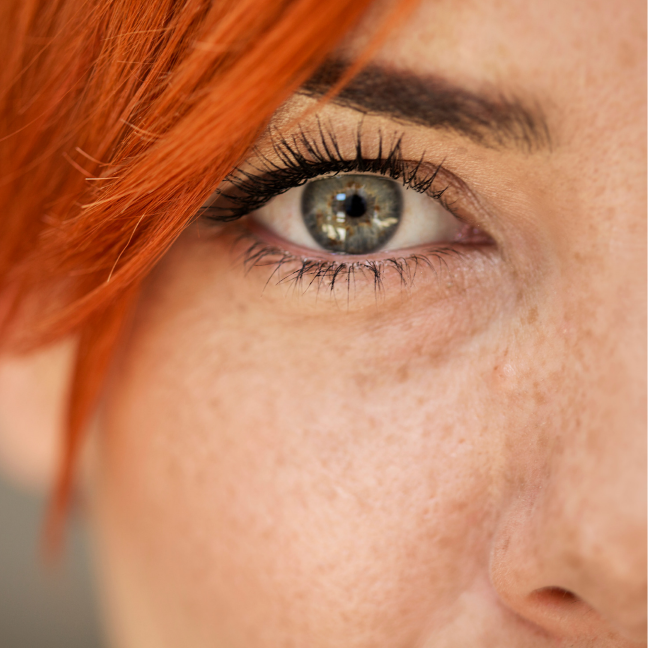
What is Ocular Melanoma?
Ocular melanoma is a type of cancer that is found in the eye or in the area around the eye (conjunctiva). The same type of cells that can develop into melanoma of the skin, melanocytes, are also found in the eye. Melanocytes are found in the middle layer of the eye called the uvea, and are responsible for everyone’s unique eye color. Ocular melanoma is also sometimes referred to as Uveal Melanoma due to the location of the melanocytes in the eye.
According to the Ocular Melanoma Foundation, ocular melanoma is the most common form of eye cancer, and the second most common form of melanoma. However, ocular melanoma is still considered a rare cancer with around 2500 adults diagnosed in the U.S. each year.
While ocular melanoma tends to develop more commonly after the age of 55, and in individuals with lighter skin pigment and lighter eye color (blue & green eye colors), it has occurred across all ages and races.

What are the symptoms of ocular melanoma?
While ocular melanoma doesn’t typically have many symptoms, the American Academy of Ophthalmology has few things to watch for:
- Visible dark spots in or around the eye
- Change in vision – development of blurred vision, blind spots, flashing lights
- Any change in pupil shape
It’s important to know what to look for, and if you are concerned about a change in your vision then be sure to see your healthcare professional. Ocular melanoma can spread to other areas of the body, called metastases, and about 50% of ocular melanomas will spread after 10-15 years if not treated.
Treatment for ocular melanoma is determined by the ophthalmologist (eye doctor) and based on the location and size of the melanoma, as well as the individual’s overall health and age. Radiation therapy and surgery are typically the main types of treatment.
Just as we recommend annual skin checks with your dermatologist or healthcare provider, it is also recommended to see an ophthalmologist each year. Ocular melanoma is not visible by simply looking into a mirror, and it doesn’t usually have many symptoms in the beginning, which makes it difficult to find.
As with melanoma of the skin, prevention and early detection are the best self-care practices for skin and eye health.
Remember these important sun safe activities year-round for the whole family:
- Seek shade
- Avoid long exposures to the sun during peak hours (10am to 4pm)
- Wear sunglasses, hats, sun protective clothing and sunscreen with an SPF 30 or greater
BONUS LEARNING: Why do we have different eye colors?
According to the American Academy of Ophthalmology, over 50% of people have brown eyes worldwide.
Just as skin color is determined by the amount of melanin present in skin cells, melanin is responsible for eye color. The higher amount of melanin found in the iris, the darker the eye color. Eyes with less melanin in the iris will appear blue. Green and hazel eyes have slightly more melanin, and brown eyes have the highest amount of melanin. Melanin begins to develop around a baby’s first birthday, which is why some babies are born with blue or lighter eyes and then the eyes darken over time as more melanin is produced. Similar to skin, melanin helps to protect our eyes from the sun’s ultraviolet (UV) rays. Thus, the darker the eye color, the higher the level of melanin and increased level of built-in protection.

RELATED ARTICLES:


